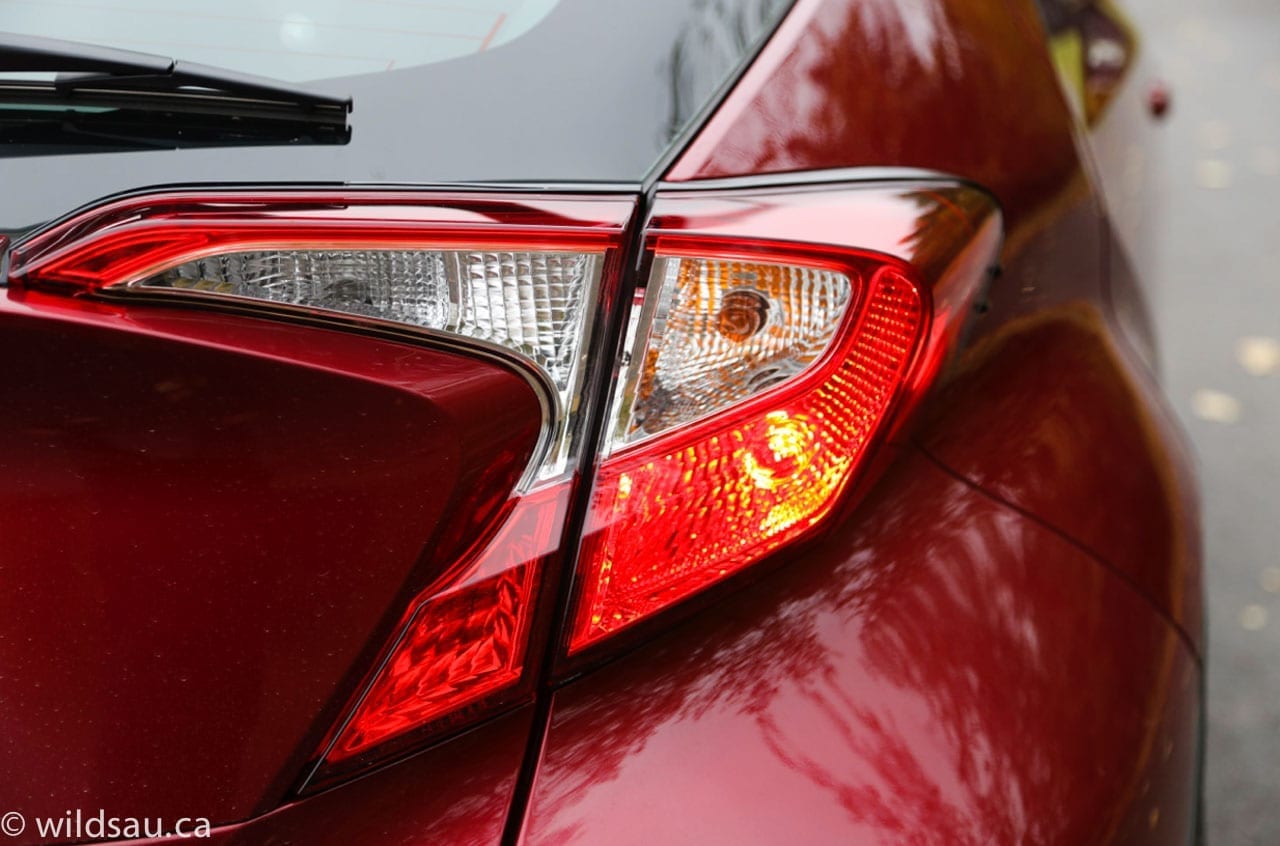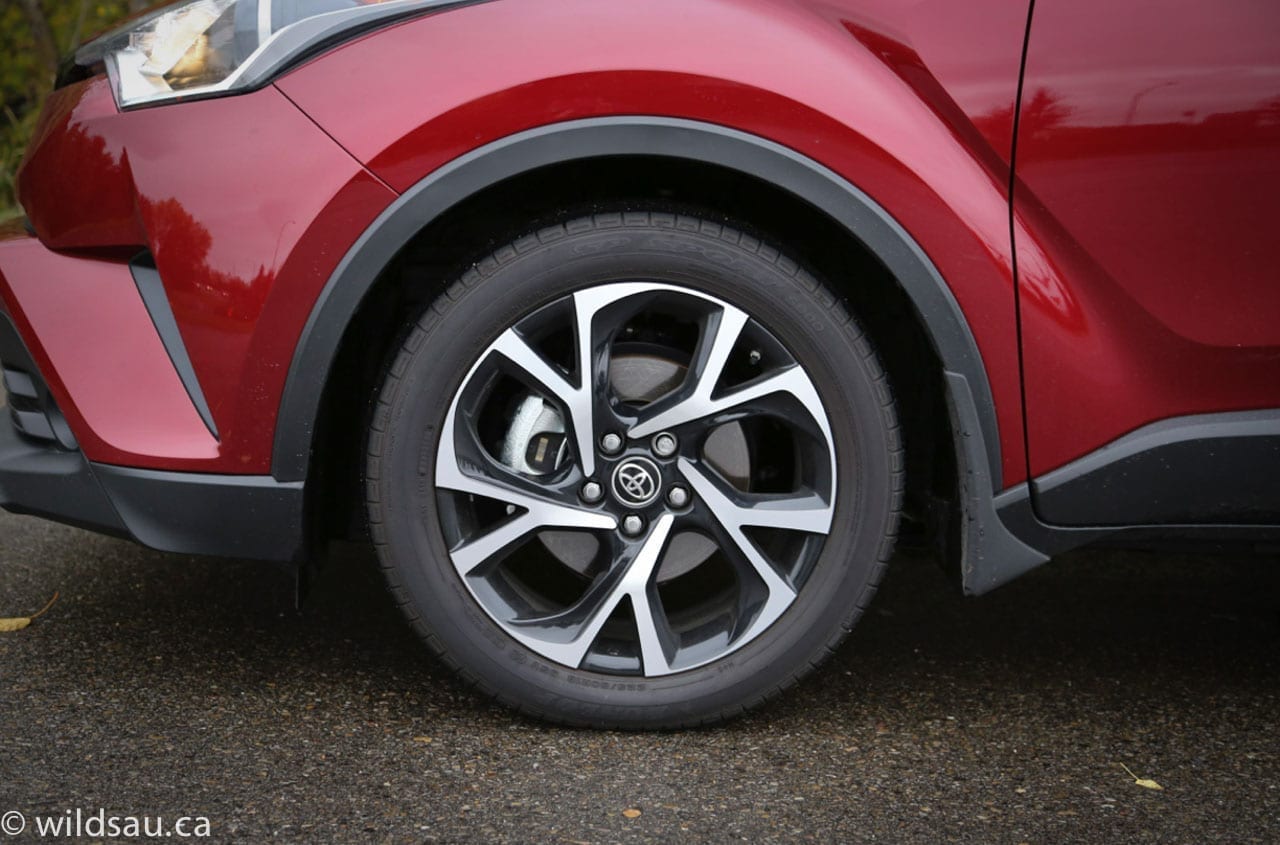A major style statement from Toyota.
Review and photos by Tom Sedens
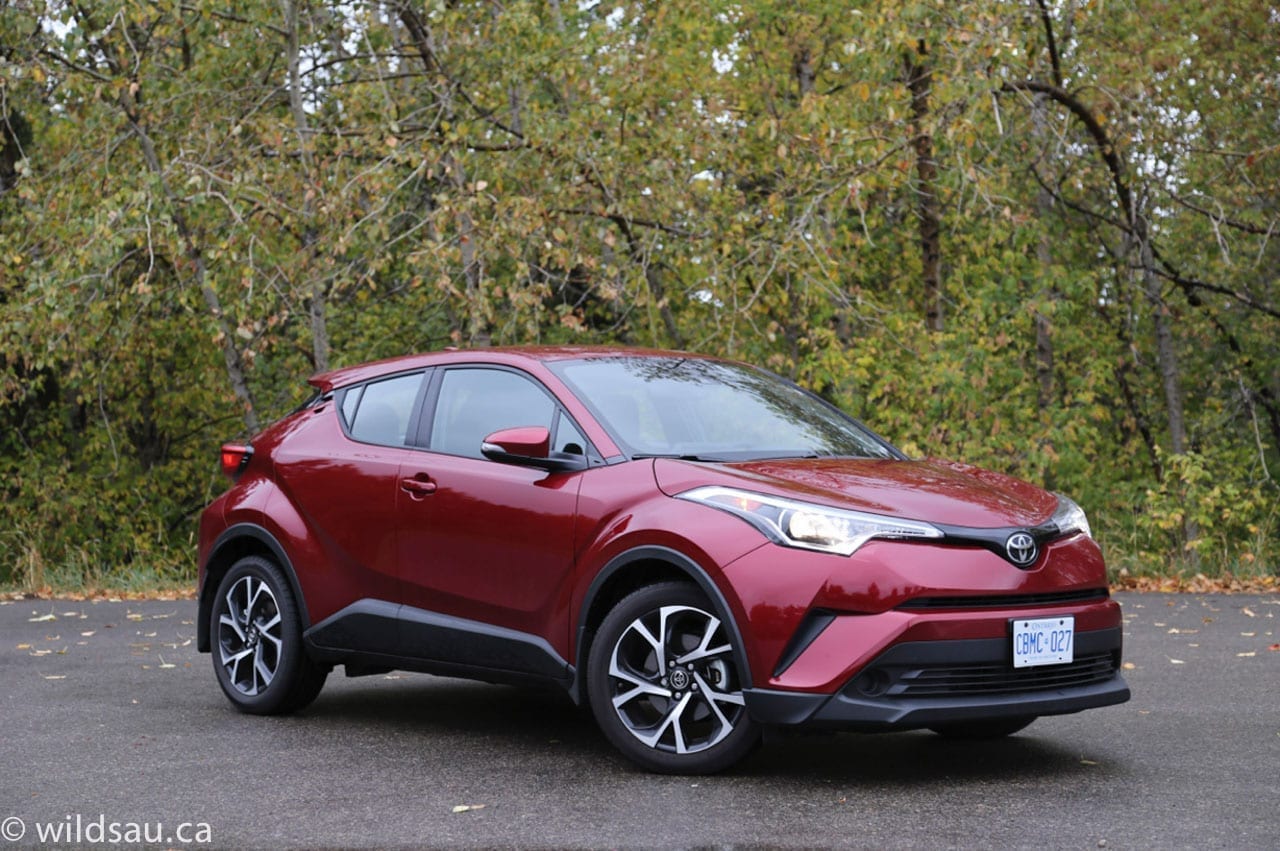
Pricing: 2018 Toyota C-HR
Base price: $24,690
Options: $1,600 Premium package; $255 premium paint
Freight: $1,760
A/C tax: $100
Price as tested: $28,405
Toyota’s tagline for the C-HR is “Get in. Get noticed.” Yep, they definitely fulfilled their mission on this one. This vehicle gets noticed alright, and during my week in it, it was pretty polarizing. People either loved it or hated it. There was no in-between.

Exterior
Toyota obviously set out to come up with an eye-catching design for the C-HR. There’s no denying that its wild lines are there for one reason – to get noticed. The extraordinary sculpting makes the C-HR distinctive from any angle. The projector headlights are set into huge swept back pods, and there are LED daytime running lights. The rear is set apart by a highly noticeable rear spoiler and massively sculpted tail light pods that jut out to the extreme. And check out those rear door handles. They really threw a lot of people off – not in a good way.
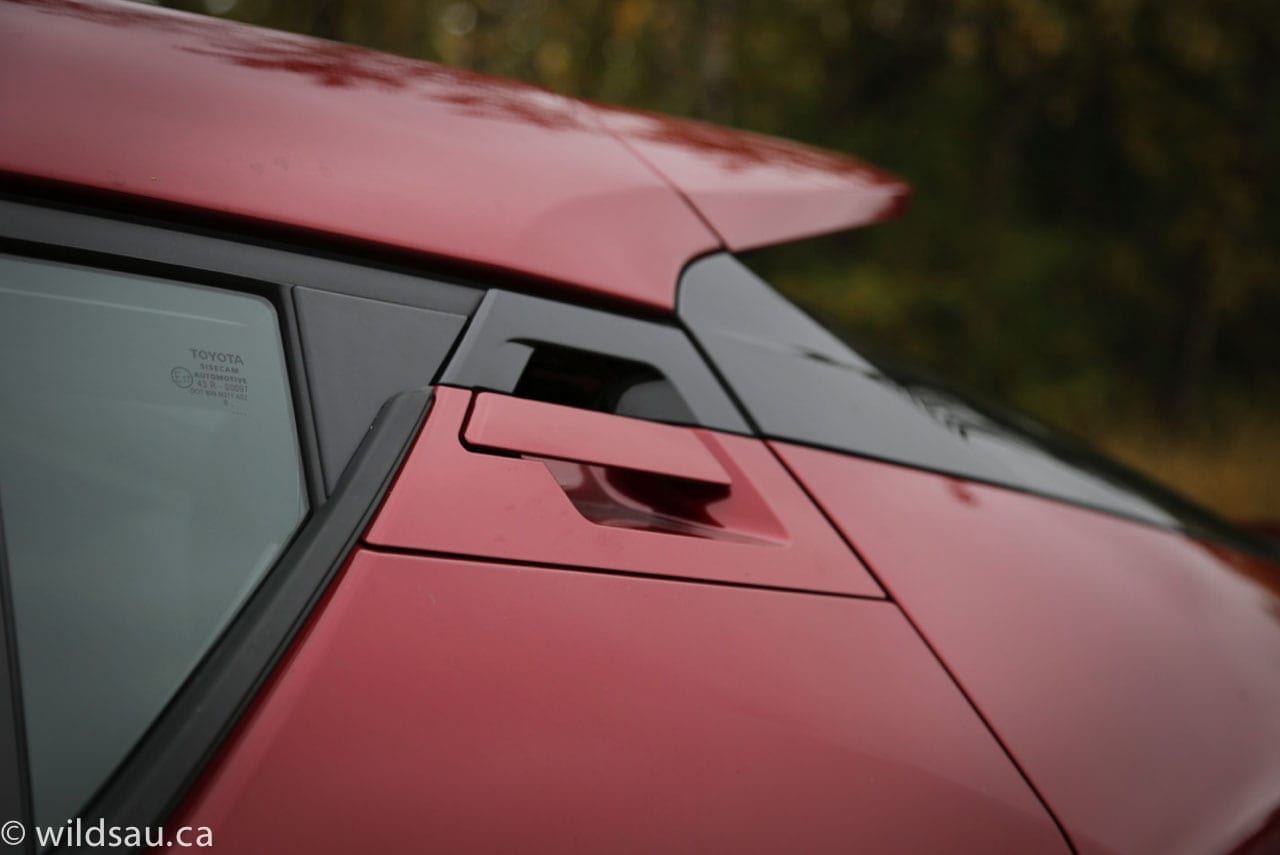
My review vehicle’s Ruby Flare Pearl colour certainly makes the shape stand out even more. I did like the meaty 225/50-sized boots on those nice 18-inch rims. I think I can safely say the C-HR falls into the love-it-or-hate-it category in terms of the styling. Of all the people that checked it out (and it did get a lot of attention), most strongly disliked its design.
Interior/Tech/Convenience
Getting into the C-HR is easy thanks to the optional smart key system (meaning keyless entry) – this also comes with the push-button start.
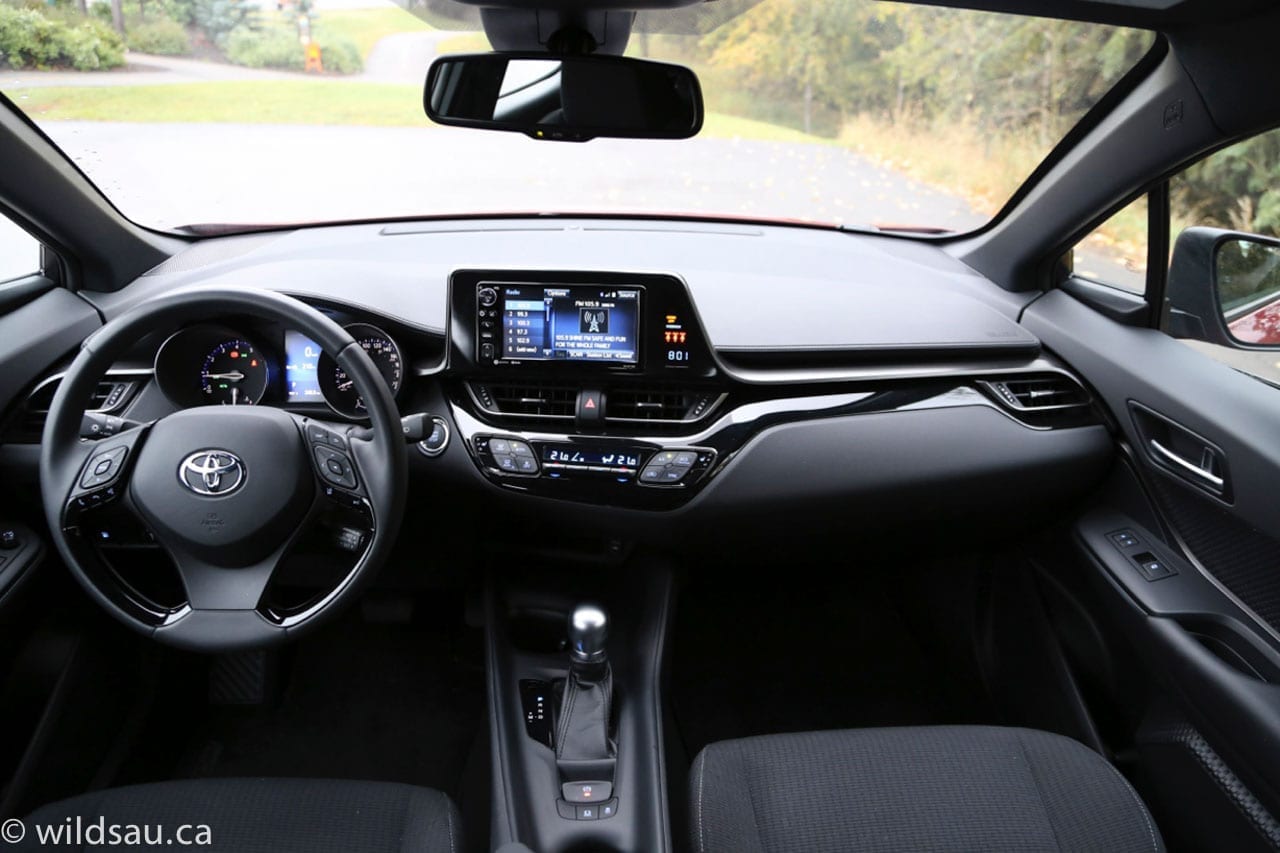
The C-HR certainly gets a modern take on the interior as well. It’s a relatively simple cabin with a slightly angled driver-centric dash. The selection of materials ranges from cheap hard plastic to nicely textured soft-touch plastics, as well as a piano black trim that takes up fingerprints and dust like a bandit. Good luck keeping that trim looking clean. I’d say the quality leans more toward entry-level than premium. There is plenty of head room in the front.
The heated fabric seats are comfortable (no leather is available, and neither is power adjustment – although they come with power lumbar support). The 7-inch touchscreen feels smallish here, and sticks up out of the dash. It controls the audio system (which sounds fine) and phone functions and there’s a dual-zone automatic climate control.
Toyota’s base suite of driver assistance tech that comes with nearly every model now is very good – there’s a pre-collision system with pedestrian detection, automatic high beams, blind-spot monitor, rear cross-traffic alert, dynamic cruise control and lane departure alert with steering assist.
Rear Seats
The back passengers won’t get a lot of room. I’m 5’10” tall and sitting behind my own driving position, I had barely enough leg room to sit comfortably. I did, however, have a couple of inches of head room which is nice. It’s a very spartan rear space – no air vents, no armrest, no charging plugs. If you have little ones, you’ll find two sets of LATCH connectors for child seats.
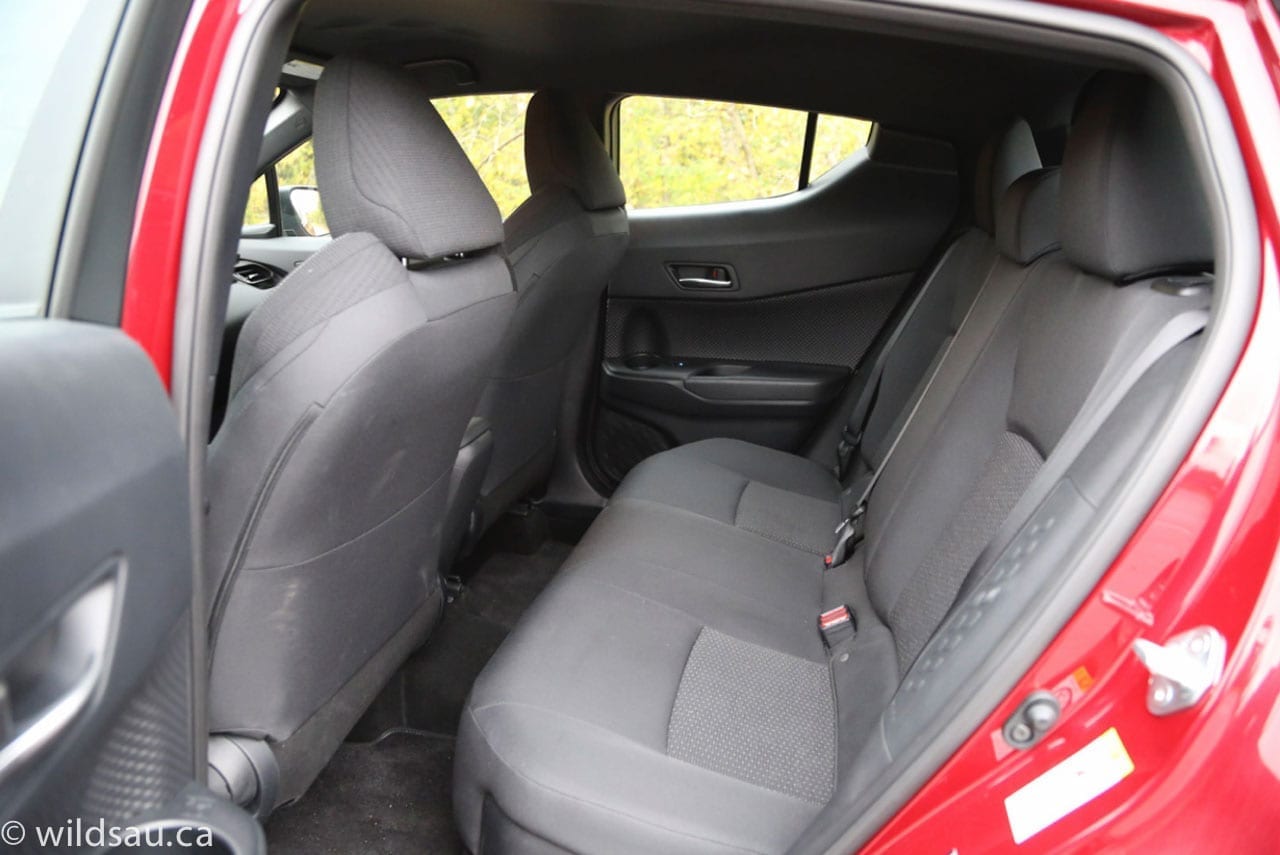
The biggest issue in the rear seating area for me was the horrifying claustrophobic feeling. The rear pillars of the vehicle are massive – the beltline swoops up to meet the roofline as it swoops down – and when you close the rear doors and look toward the outside, you are looking at black plastic rather than through a window. It’s not a pleasant place to be, that’s for sure. Even our kids hated sitting in the back.
Storage
There’s a bin at the front of the console where you can lay your phone down – you’ll also find an auxiliary and USB plug there. You’ll find another small carpeted bin under the armrest lid as well as a 12V plug.
The trunk is reasonable at 538L, but definitely feels on the small side in this class. We found the load floor to be very high. The rear seats fold down (and split 60/40) to add more cargo space – up to 1031 litres. There’s a hard parcel shelf that flips up when you open the trunk.
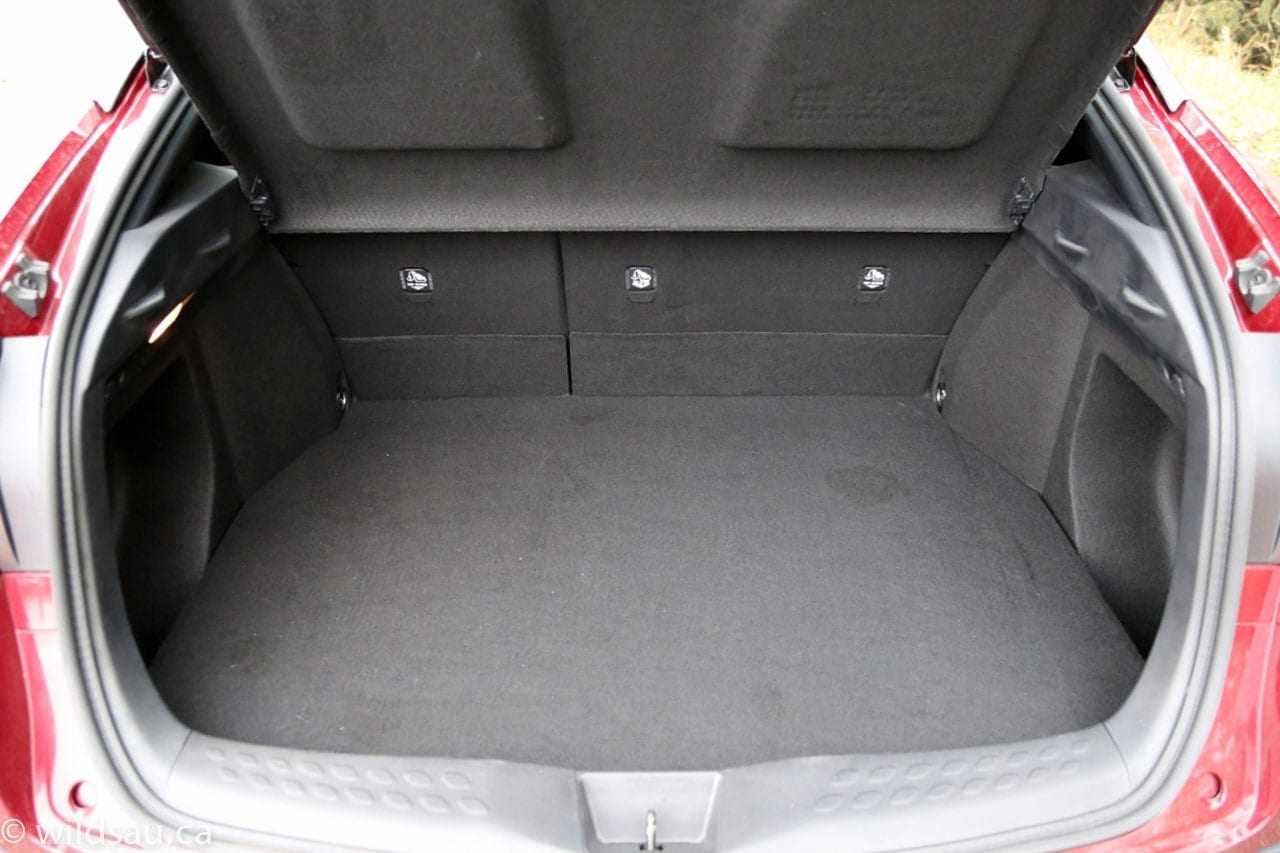
Under the Hood
The front-wheel-drive-only C-HR has a 144HP 2.0L 4-cylinder paired with a continuously-variable transmission (CVT). The engine puts out 139 lb.ft of torque at 3800 RPM. It’s reasonably efficient – Toyota rates it at 8.7 L/100 km in the city and 7.5 L/100 km on the highway. We averaged 8.7 L/100 km over the course of a normal week – lots of city commuting and a few rips down the freeway and highway.
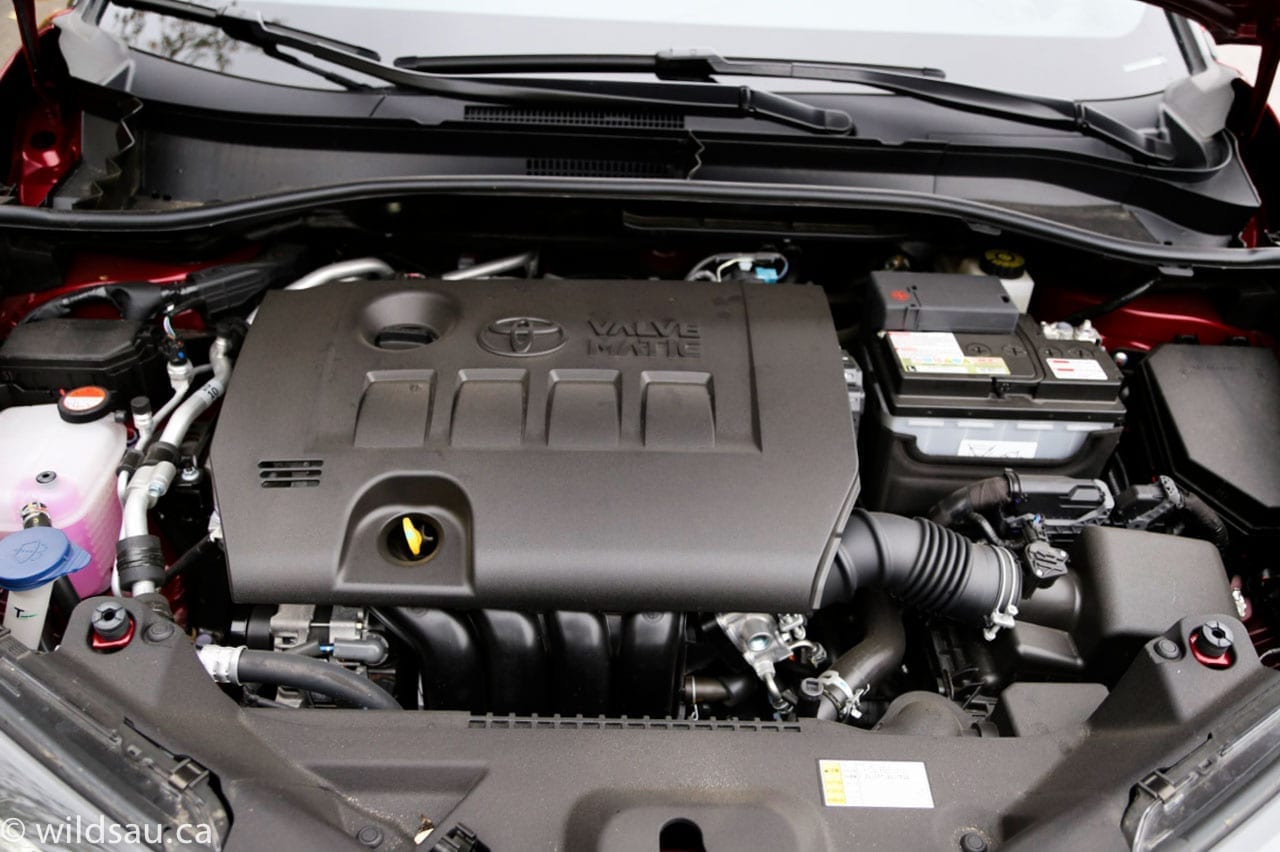
The Drive
While the powertrain provides adequate jam for daily driving, the C-HR protests when you ask for anything beyond normal acceleration. It’s not fast, and that CVT sends revs soaring without netting you much of anything. It takes its sweet time and isn’t a hot-rod by any measure. Again, it’s perfectly fine for normal driving. Just don’t step on it and expect much.
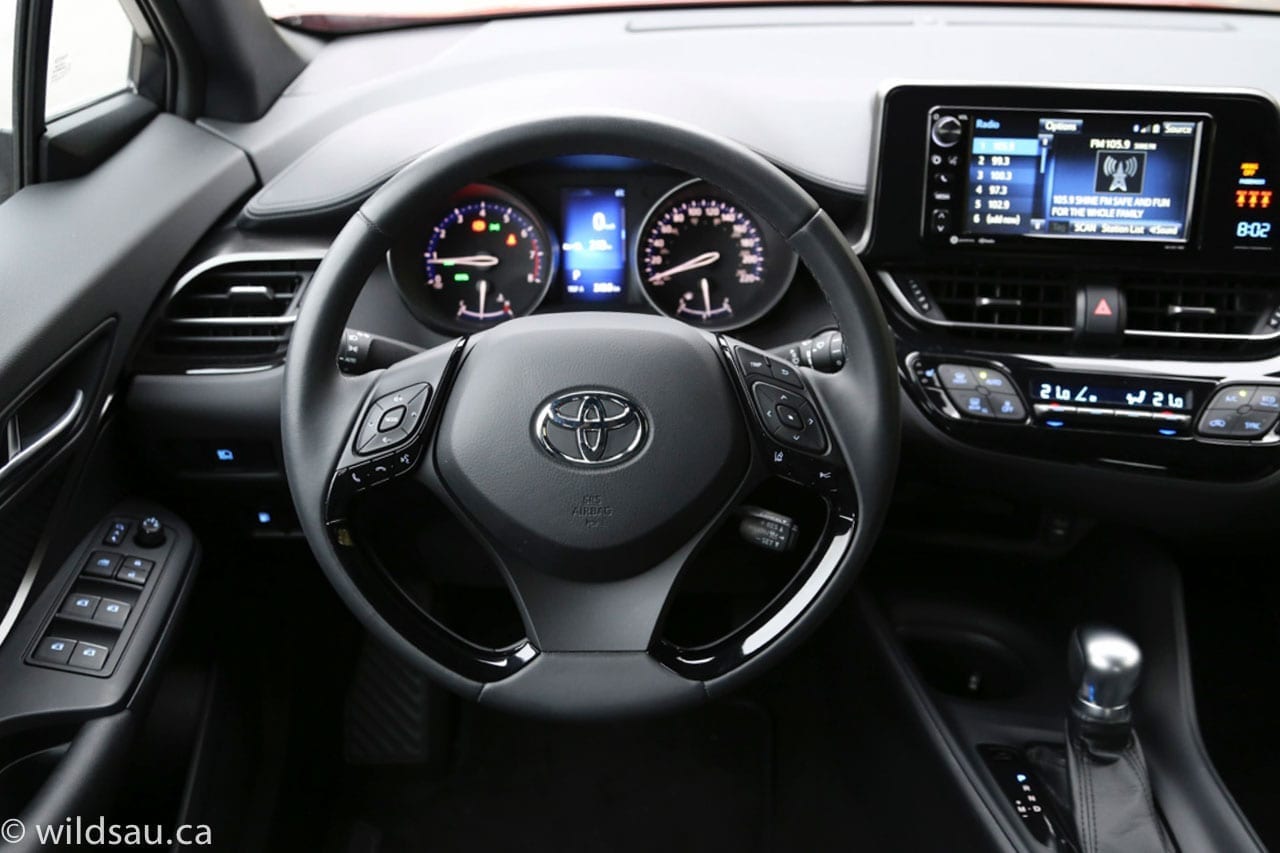
Sport mode lets you explore 7 simulated “gears” stepped into the CVT programming, which you can manually “shift” using the gear selector. I actually found these more fun and engaging than many real transmissions and their manual shifting mode, as the changes are lightning quick here and you can actually use the CVT to effectively engine brake as well.
The C-HR rides firmly but stays comfortable in most situations. Handling is great – it’s a stable, competent little urban warrior and doesn’t mind being tossed around a bit.
The front and, surprisingly, rear visibility isn’t bad – but woe be unto him who checks over his shoulder. The C-HR’s rear pillars (the same ones I brought up in the rear seating section) see to it that you will go into full-blown panic mode any time you do a shoulder check – thank goodness for the blind-spot monitoring system. The vehicle is relatively quiet with the exception of a little engine growl on acceleration. Road and wind noise are kept in check very well, even at higher speeds.
Nitpicks
The C-HR’s back-up camera is embedded into the rear-view mirror. I can’t overstate how irritating that is, and how annoying this was every single time I put the car into reverse. Toyota obviously has the technology to link the camera to the main screen (since they do it in every other vehicle basically), and the screen is right there on the dash. What would be a good reason to put a tiny screen into the rear view mirror instead? I absolutely hated this.
The Verdict
Toyota keeps this model simple. There is only one option package – and my review vehicle had it. So if you want more in your subcompact crossover than you read about here, you’ll need to look elsewhere. The C-HR isn’t what I’d call super-practical. It’s pretty basic in terms of some of the content and the utility factor is lacking (small rear seats, small trunk). But if you’re after a strong style statement, this might just be the ride for you.

WAF (Wife Approval Factor) was low. She hated the styling and felt that we had seen better small crossovers in terms of their liveability, particularly when it comes to a small family. She’s right.
If you’re shopping in this category, you’re likely looking at competitors like the Mazda CX-3, Honda HR-V and the Nissan Juke. The C-HR stacks up just fine against these in many departments, but it’s the only one that doesn’t offer all-wheel drive. You also won’t be able to get navigation or a sunroof, and that suddenly makes this little guy seem a bit limited when compared to the competition.
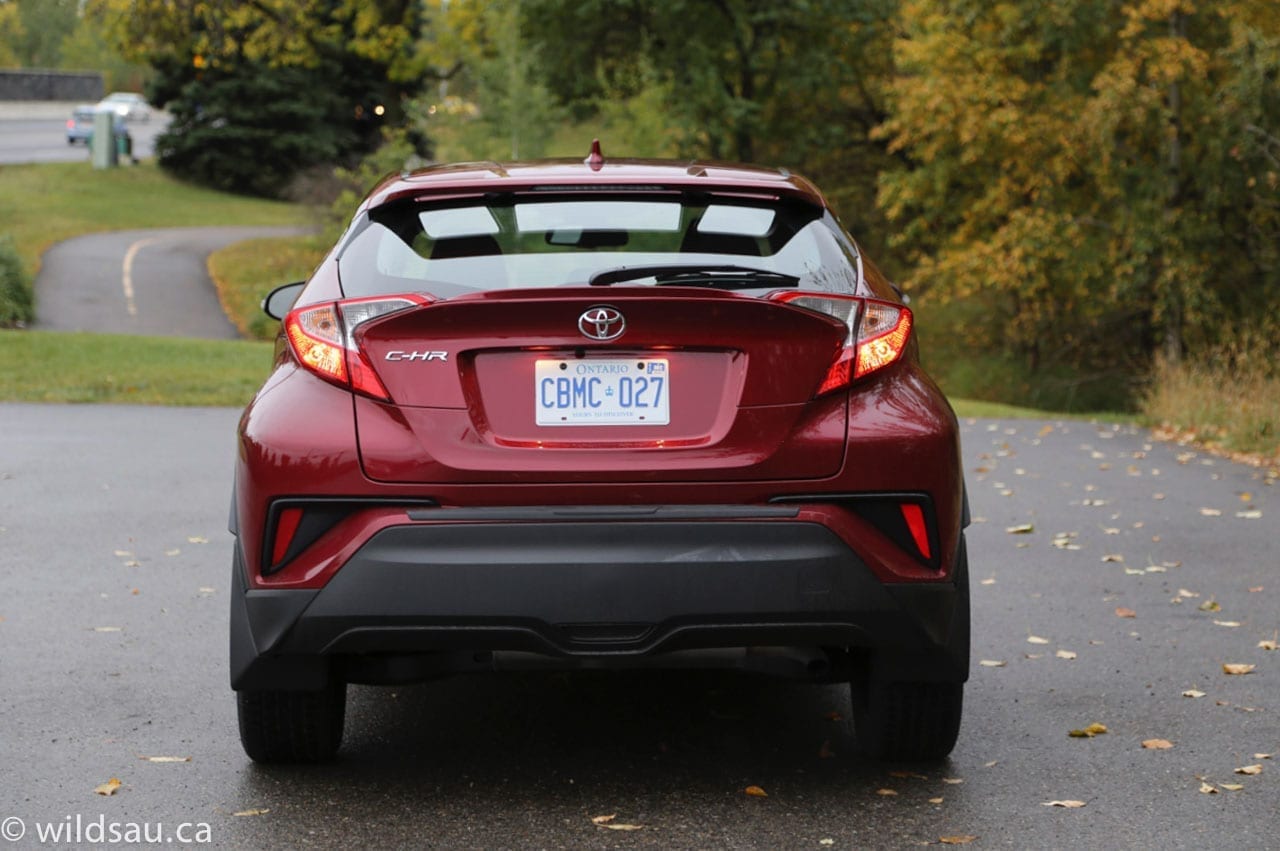
Disclosure: Vehicle was provided by Toyota Canada.
If you enjoyed this review, feel free to check out my other vehicle reviews under the car reviews tab at the top of my blog.
